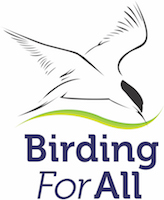GOB 124 Birds of Pay
This article first appeared in Birdwatching Magazine December 2019
The glorious sunshine of yesterday gave way to a steady drizzle in the cool of the morning, leaving me in no doubt that Autumn had begun. Having spent that sunny day supporting an all-access path initiative at Minsmere, we had decided to skip an indifferent breakfast to brave the dawn and the horribly clogged A12 and head home. Between us and the main road were a few miles of leafy lanes and we were hoping to add a few birds we have struggled for all year… maybe a roadside owl or a one of the species Suffolk used to abound in.
An overcrowded reserve, at the ‘wrong time of year’, had not inspired me in the way the same reserve had in the sixties and seventies.
An afternoon meeting meant we could scooter around the woodland and marshes that I’ve loved since first birding there. Chatting as we drove up from Kent we tried to recall when we had last visited and had to conclude it was at least a decade ago. Sad to say our birding has been almost exclusively confined to our home county of late and, while it still holds its treasures its not always easy for me to access the right places at the right times for the right birds.
Fifty years ago, I was fit and able, and so were bird populations. I could go a mile or two from home and expect Turtle Doves purring in the background while I watched Spotted Flycatchers or Lesser-spotted Woodpeckers. Tree Sparrows were so much an every-day a bird as not even to warrant recording. Although Great-crested Grebes had just made a comeback, Collared Doves were the thing of legend, let alone the myth of Little Egrets.
Thirty years ago, I would push 300 species in a year, these days it can be not much more than half that number.
So, there I was, drawn out of my patch to lend support to other birders whose spirits are strong, but whose bodies let them down. Slowly driving through the damp morning along narrow lanes I certainly saw plenty of birds. The trouble is, with the exception of a few corvids and the ubiquitous doves and pigeons all the birds we saw really had no business being there. In five miles of lanes we counted 159, mostly young, Pheasants and 47 Frenchies (Red-legged Partridges) actually on the road! Although we crawled along they were hell bent on suicide runs in front of the car rather than away from it.
I should not have been shocked.
Thirty years ago, a million pheasants were reared in pens to be released for the guns of the tweed-suited solicitors or red-trousered country magistrates and for the week-end sport of overpaid London brokers. Apparently, now, over forty million pheasants and red-legged partridges are released in late summer to feed the massed cartridges of those with more money than compassion. Only half of them end up in the shooters bag, the rest end up in predator stomachs.
I’ve heard many a birder defend the practice as enhancing the land by feeding and sheltering plenty of passerines that benefit from what the game birds leave uneaten. But that has now been proven to be little compensation as the hunters’ hordes out eat, out compete and generally do better at other’s expense. Moreover, where game birds abound raptor and corvid numbers rise and foxes multiply threatening ground nesters in particular, when the Autumn bounty has abated.
Clay-pigeons don’t die in agony and bring none of these negative impacts, even offering more challenge to the guns.





